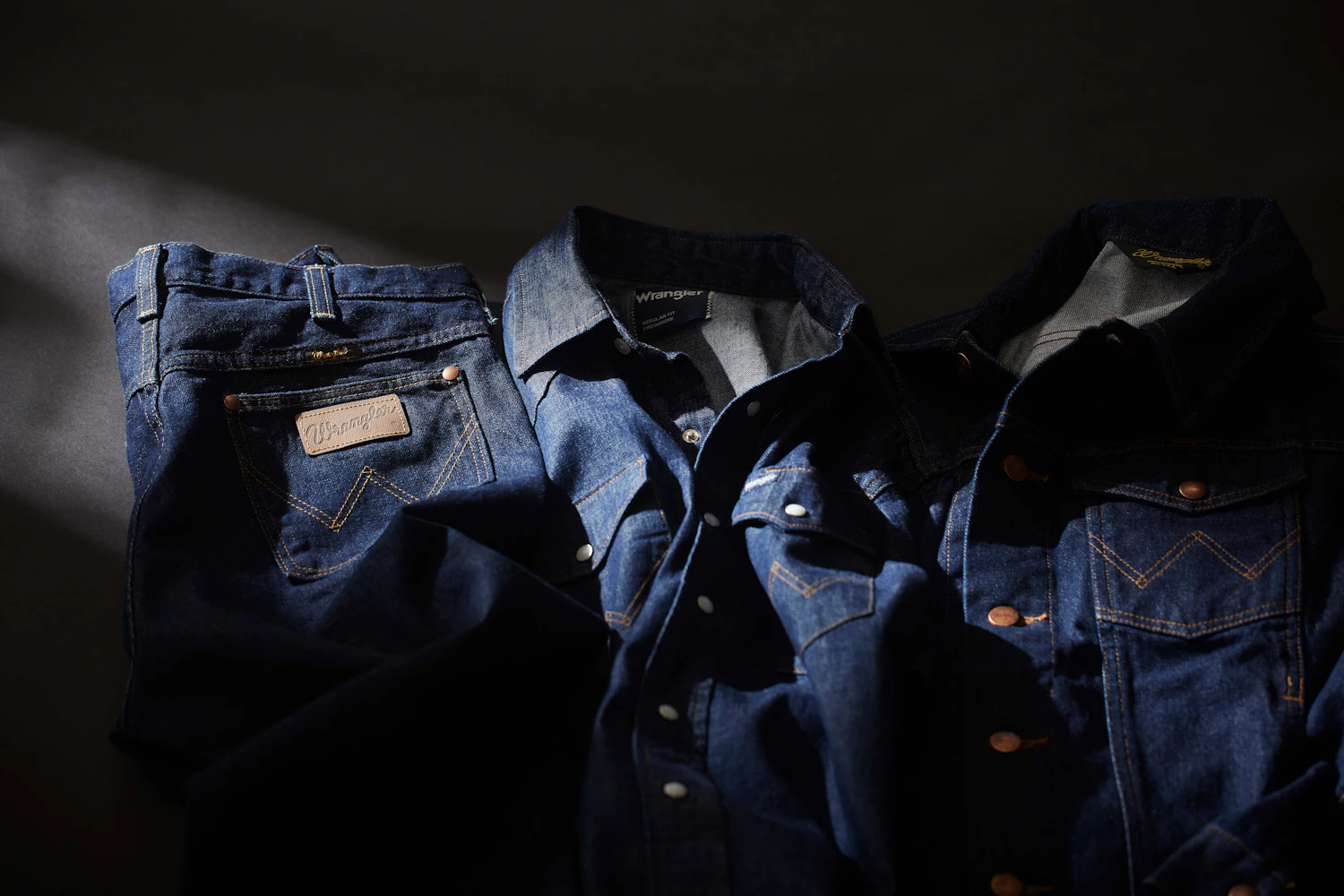12.05FRI
The History of Denim Developed for Cowboys: 'Wrangler'

Wrangler, the beloved denim brand of American cowboys. By tracing its history, it is possible to discover the unique features and designs that are not seen in other denim brands and to understand the unique personality of Wrangler. This time, we asked Sho Uchino of Edwin Co., Ltd. about the history of the brand, and he explained in detail the committed specifications and designs.
The Birth of Wrangler for Cowboys
"Wrangler was born in 1947 in Greensboro, North Carolina, USA. Interestingly, there's a long history before Wrangler got its start, including a predecessor company founded in 1904 called the 'Hudson Overall Company,' which changed its name to 'BLUE BELL' in 1919."This BLUE BELL mark is still found on the Wrangler logo today, so many people may be familiar with it. It was a workwear brand that later merged with another workwear brand, 'BIG BEN.'
"Later, BLUE BELL acquired a company called 'CASEY JONES,' which owned the Wrangler label. From there, they entered the cowboy market and Wrangler got its start as a western wear brand."
This article is for members only.
Please register to read the rest of the article.
What you can do with a membership
- Read members-only articles
and use text-to-speech. - Unlimited article favourites
and browsing history. - Attend members-only events.
- Get the latest information
with our email newsletter.
CONCEPT VIDEO
"fashion tech news" Unveils New Logo & Concept Video
TOP ARTICLES
RELATED ARTICLES
CONCEPT VIDEO
"fashion tech news" Unveils New Logo & Concept Video
CONTACT
If you have any questions or enquiries, please enter your details in the form below.






![[No.1] Living National Treasure Akihiro Maeta's Childhood and First Encounter with Crafts](https://images.microcms-assets.io/assets/1775a3633c8b428d9f011c6a758a8a5c/240412c3efa94a86b60f159fbfa21986/OGP1.JPG?w=400&fm=webp)
%E3%81%AE%E3%82%B3%E3%83%92%E3%82%9A%E3%83%BC.jpeg?w=400&fm=webp)









.png?w=400&fm=webp)


